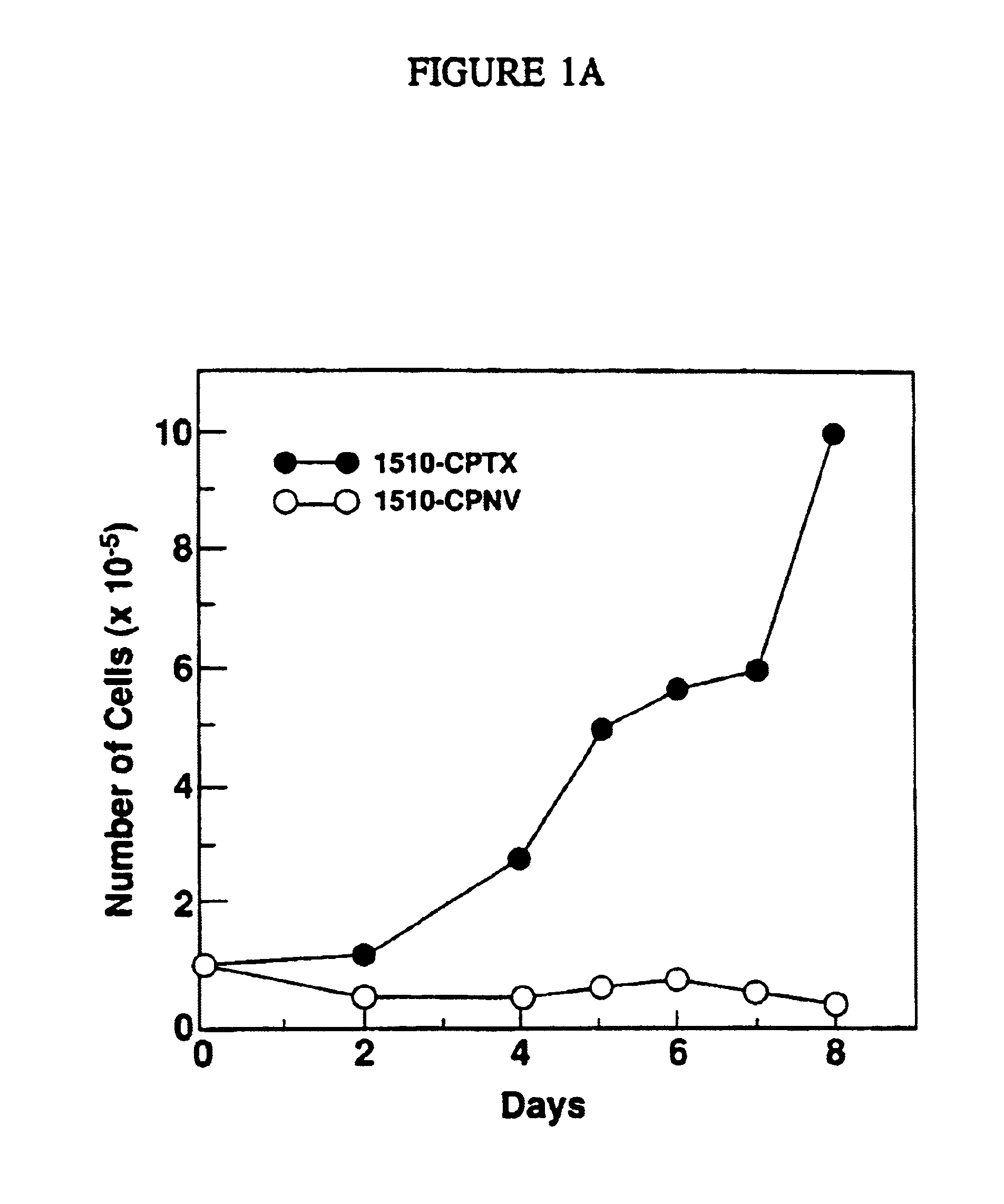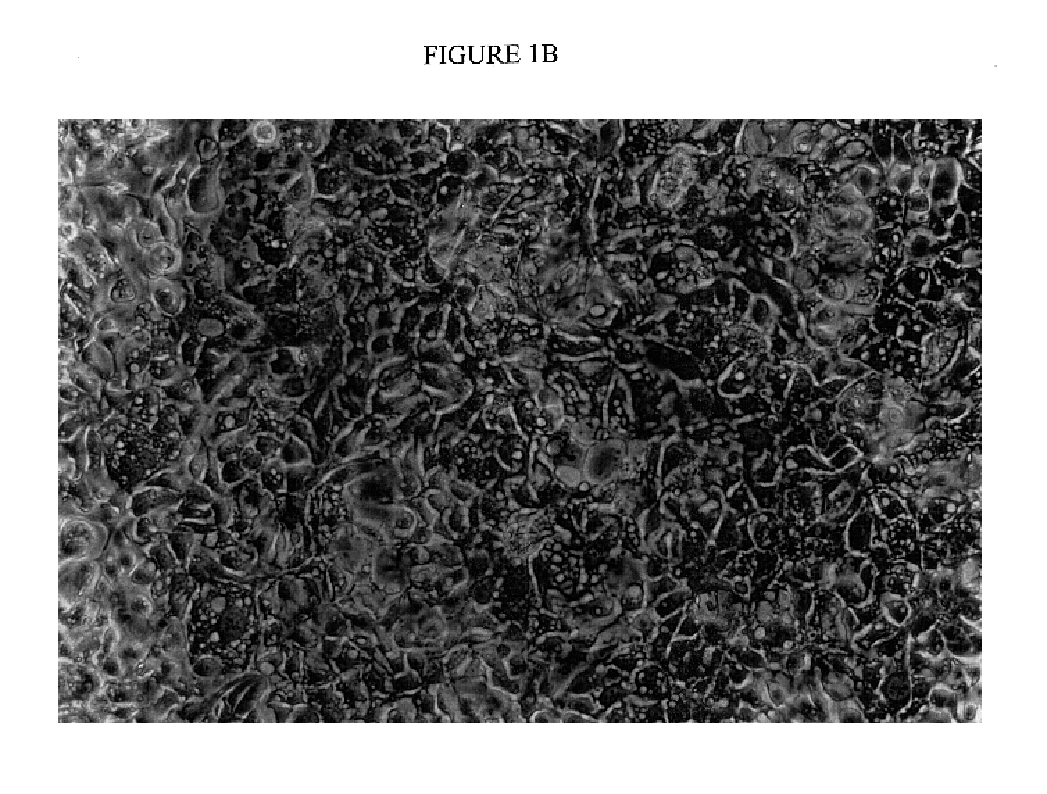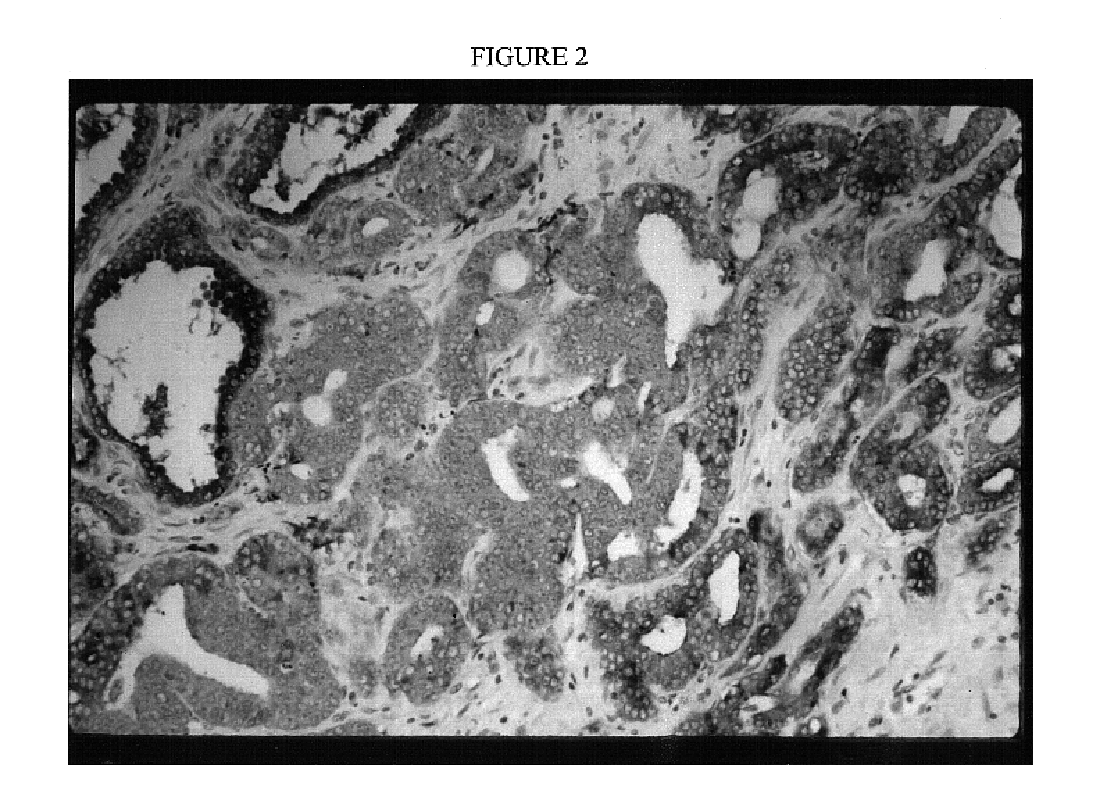Immortal human prostate epithelial cell lines and clones and their applications in the research and therapy of prostate cancer
a human prostate and epithelial cell technology, applied in the field of immortalized, malignant, human adult prostate epithelial cell lines and their applications in the research and therapy of prostate cancer, can solve the problems of preventing the development of new therapies for prostate cancer, largely untreatable disseminated metastatic disease, and relatively little known about the biological events causing the initiation and progression of prostate cancer. to achieve the effect of treating or preventing the recurrence of prosta
- Summary
- Abstract
- Description
- Claims
- Application Information
AI Technical Summary
Benefits of technology
Problems solved by technology
Method used
Image
Examples
example i
(1) Characteristics of Patients from whom Cultured Epithelial Cell Lines were Initiated.
[0068]Prostate epithelial cell lines were initiated from radical prostatectomy specimens from 6 consecutive patients with intermediate to high grade tumors (Gleason grades 6-8). (See Table 1). Cell cultures were initiated by mechanical disruption or enzymatic digestion of primary tumor nodules excised from fresh radical prostatectomy specimens. See Example II for detailed description of culture methods.
[0069]
TABLE 1Prostate Cancer Patients: Clinical InformationPre-Op PSAPost-Op GleasonPatient #Age(yrs)(ng / ml)Grade15105114.93 + 3 = 615126414.04 + 3 = 71519547.74 + 4 = 81532525.03 + 3 = 61535662.23 + 5 = 815424814.33 + 5 = 8
(2) Pathological Analysis of Tissue Specimens.
[0070]Pathological analysis of fresh tissue specimens used to initiate prostate cancer cell lines revealed that some cancer specimens were pure tumor, while others consisted of mixtures of benign and malignant cells. See Table 2: Pre...
example ii
Single Cell Cloning and Characterization of Immortalized Malignant Prostatic Epithelial Cells
Materials and Methods
[0076]Initiation of Primary Cell Cultures. Tissue specimens used for generating cell lines were obtained from six consecutive patients under going radical prostatectomies at the NCI for treatment of intermediate to high grade localized prostate cancer (Gleason grades 6-8, tumor stages T2C to T3C). Fresh prostatectomy specimens obtained directly from the operating room were dissected under sterile conditions by an experienced pathologist. Tissues designated as normal prostate, prostate cancer, or normal seminal vesicle on gross inspection were dissected separately for the purpose of generating cell cultures. Cultures were initiated by mechanical disruption (1 cm fragments) (21). Specimens from patients 1510 and 1512 were prepared by enzymatic digestion, while subsequent cultures were initiated by mechanical disruption. For enzymatic digestion, minced tissue was suspended ...
PUM
| Property | Measurement | Unit |
|---|---|---|
| diameter | aaaaa | aaaaa |
| diameter | aaaaa | aaaaa |
| concentration | aaaaa | aaaaa |
Abstract
Description
Claims
Application Information
 Login to View More
Login to View More - R&D
- Intellectual Property
- Life Sciences
- Materials
- Tech Scout
- Unparalleled Data Quality
- Higher Quality Content
- 60% Fewer Hallucinations
Browse by: Latest US Patents, China's latest patents, Technical Efficacy Thesaurus, Application Domain, Technology Topic, Popular Technical Reports.
© 2025 PatSnap. All rights reserved.Legal|Privacy policy|Modern Slavery Act Transparency Statement|Sitemap|About US| Contact US: help@patsnap.com



